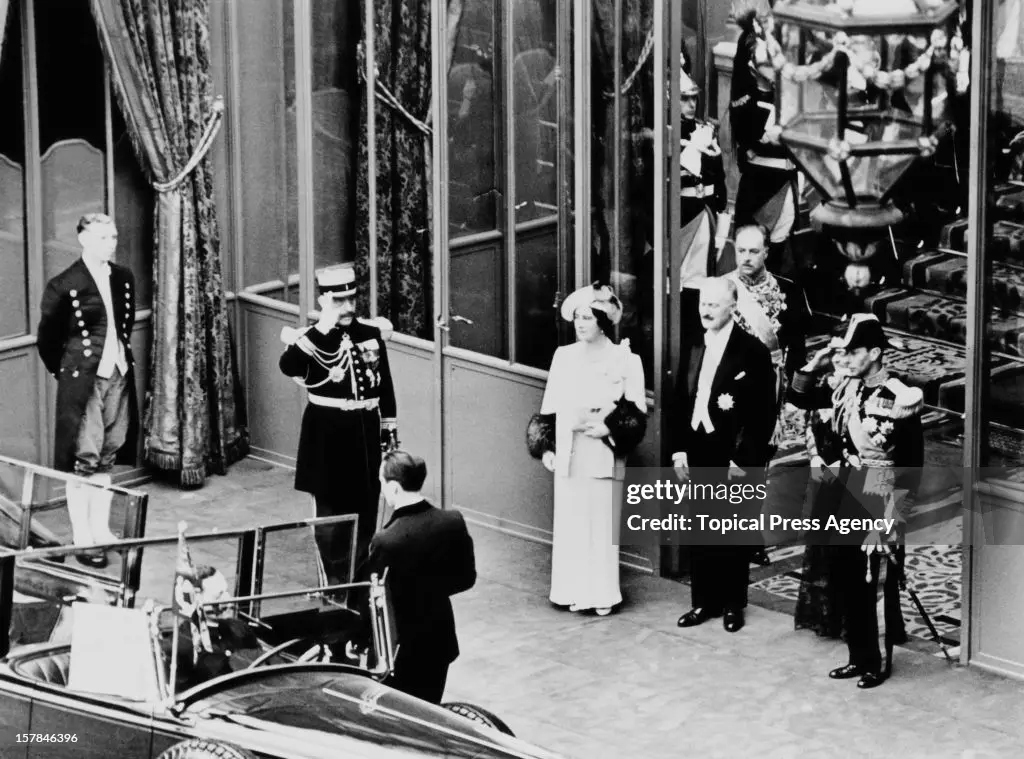The latest work of one of my favorite authors, Oxford-educated historian Gareth Russell, is a delightful literary portrait of Queen Elizabeth the Queen Mother entitled Do Let's Have Another Drink! As Mr. Russell makes clear from the beginning of the book, it is not a full biography, covering every aspect and incident of the late Queen Mother's life. It is rather a collection of anecdotes, arranged in chronological order, which nevertheless create a vibrant depiction of the Queen whom Hitler called "the most dangerous woman in Europe." While the book is laugh-out-loud amusing it also has many poignant moments as befits the life of a royal consort who endured two world wars, accompanied by apocalyptic global changes, including the rise of Communism and the decline of the British Empire. Elizabeth suffered many personal losses throughout, such as the deaths of family members, and the scandals which haunt most royal families, including the relatively staid House of Windsor. The lady whom the more elegant and stylish set liked to ridicule for her love of cocktails, good food, and country life could also be the life of any party when she chose to be, taking Paris by storm in her white wardrobe. The Queen Mother became most known for her bright smile and spine of steel as she picked her way through the rubble left by German bombs in order to comfort the citizens of London. Her refusal to flee London with her children during the worst of the blitz made her a beloved figure, a larger-than-life legend in her own time, and in times to come.
I thoroughly enjoyed the account of the visit to Paris of King George VI and Queen Elizabeth. The Queen had just lost her mother the Countess of Strathmore and so she was in mourning. Black was not considered suitable for so important a state visit, so the Queen's designer Norman Hartnell designed a white wardrobe, since in France white was the color of mourning for queens. I have no doubt Marie-Antoinette would have approved. In the words of The Court Jeweller:
In the spring of 1938, Buckingham Palace was hard at work planning King George VI and Queen Elizabeth’s first state visit. They were due to arrive in France for the visit in June, but the death of the Queen’s mother, the Countess of Strathmore, meant that plans had to be changed. So did the Queen’s state visit wardrobe, which was in the process of being made by Norman Hartnell.
Instead of remaking the tour wardrobe in black mourning colors, Hartnell suggested that the Queen’s clothes for the visit should be white instead, pointing to Queen Victoria’s all-white funeral as a royal precedent. The fittings for the outfits were finished in a hurried rush; Elizabeth wrote to her mother-in-law, Queen Mary, that she was “nearly demented with rushing up and down and trying to order and try on all my white things for Paris!” With the white wardrobe, naturally, the Queen packed lots of royal pearls in her bags, too. (Read more.)
According to The Royal Order of Sartorial Splendor:
When the trip arrived, Queen Elizabeth left England in black and arrived in France in dazzling white. Dressed like a cloud, she was an ethereal sight to behold. There are several accounts of her presence inspiring gasps from the crowds, from the moment she stepped off the train to the flutter when she opened her parasol (in fact, she temporarily revived parasol production in Paris and London). The white color proved to be the perfect thing to make her easily seen in the crowd, as did her seemingly outdated style. Her romantic image was the opposite of what many French women were striving for with their sleek up looks and raised skirt heights; and as is the case more often than not, timeless elegance and working with what suits you before anything else easily surpassed the trends. (Read more.)
From The Enchanted Manor:
Normally not known as a fashion icon, especially in her later years, the famous “White Wardrobe” worn by the Queen in Paris during the Royal Tour of France in 1938 caused an international fashion sensation. Hartnell had designed romantic day and evening dresses made of beautiful white fabrics such as the finest silks, chiffons, lace and tulle which were embellished with sequin and pearls. Inspired by a Winterhalter portrait of Queen Victoria, Hartnell incorporated crinoline into the dress designs and the Queen also revived a past fashion trend by accessorizing her outfits with lovely parasols to match each dress. With the great press coverage and wonderful reviews of her clothing, the Queen wanted to commemorate the success of the Paris visit by commissioning her favorite royal photographer, Cecil Beaton, to document the beautiful Hartnell dresses in a series of portraits taken in the State Rooms and gardens of Buckingham Palace. (If you are interested in finding out more information about the life of Queen Elizabeth, the Queen Mother, please clink on the link) (Read more.)
I cannot recommend Gareth Russell's book highly enough. He is one of the best history writers in the English language, due to the thoroughness of his research and his marvelous expressiveness, as he is a novelist and playwright as well.





















No comments:
Post a Comment